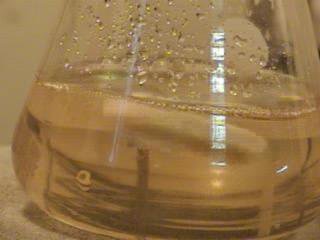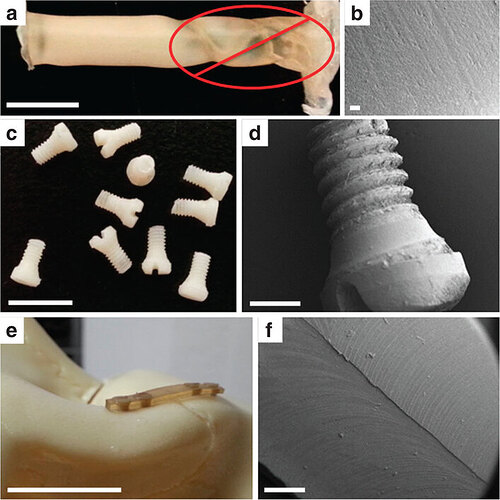I read recently that silk scaffolds were implanted with cells to create replacement tissues. It seems likely it was for the reason you suggest.
A better article is this one in Nature. For those of you without access (or to much technical interest), here is a picture from the article:
(a) Silk blanks prior to machining (scale=6 mm). The left portion of the blank is considered uniform and used for machining while the right portion was discarded due to bubbles and formation of weld lines. (b) SEM image of the surface of silk material after being turned on a lathe (scale=100 μm). (c) Pure silk screws turned on a lathe and then with a 1–72 (English designation) thread-cutting die (scale=6 mm). The major diameter of the screws was ~1.70 mm. (d) SEM image of 1–72 silk screw (scale=1 mm). (e) Combination of silk screws and plates on model skull orbital bone to show fixation potential (scale=25 mm). (f) SEM image of milled surface of silk plate (scale=1 mm).
6 Likes
I am a chemist that explores things that many consider impossible like plastics as conductive as copper wire, materials that swim away from you when illuminated, solar cells that tap into zero point energy to gain vast increases in apparent efficiency, mold proof and fade proof composite decking, levitating stir bars by unknown mechanism, many curative treatments for incurable diseases like lupus, alzheimers, epstein barr, cancers of various types, etc, etc, etc.



5 Likes
